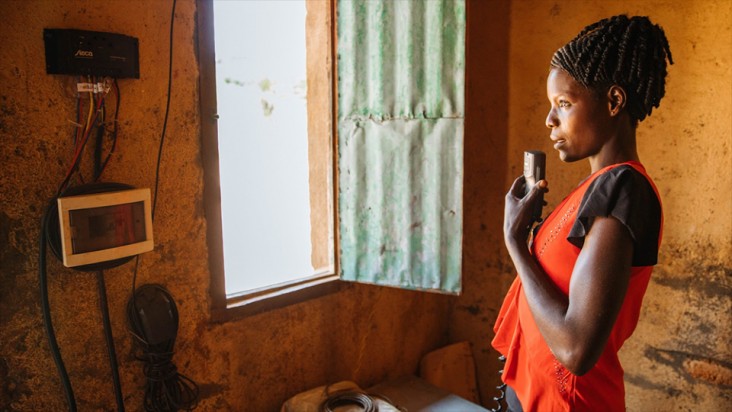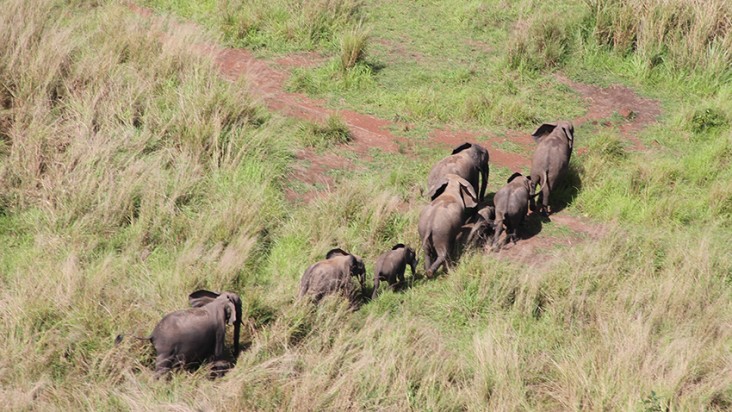Speeches Shim

By Tiffany Gibert, Environmental Incentives • November 13, 2019
In northern Democratic Republic of Congo (DRC) and eastern Central African Republic (CAR), high-frequency radios are helping to cultivate peace, security, and, more recently, conservation. Beginning in 2010, an Early Warning Network of radios has provided life-saving messages that warn of security risks and threats from armed groups, including the Lord’s Resistance Army (LRA). By looting, abducting civilians, and poaching wildlife, these groups expand their power and wealth while destabilizing the region’s peace and governance. To combat their actions, USAID’s Community Resilience in Central Africa (CRCA) project has worked to maintain the critical radio network and installed 138 high frequency radios across 185 communities.The network equips those affected by armed groups with the skills and tools to reduce their exposure to security threats and to protect both their homes and their countries’ biodiversity.
In 2016, the Early Warning System reported a spike in LRA attacks near DRC’s Garamba National Park, a 2,000-square-mile UNESCO World Heritage site and home to iconic African wildlife, including elephants and DRC’s only population of the rare Kordofan giraffe. During these attacks, suspected LRA forces looted civilians in the park’s vicinity, likely to obtain food and supplies to sustain poaching activities. In assessing the 2016 and past reports, CRCA partner Invisible Children emphasized “a clear, positive correlation between LRA poaching activity in Garamba and violent attacks on communities surrounding the park.” LRA escapees later confirmed that the leader, Joseph Kony, had commanded groups to poach elephants and return the ivory to him.
CRCA works closely with African Parks, which manages Garamba and Chinko Reserve in CAR, to expand the Early Warning Network and ensure environmental threats are continually monitored and reported. USAID also strengthens the management of these two protected areas and works with local communities to reduce threats to biodiversity through parallel and integrated programming under the Central Africa Regional Program for the Environment (CARPE). All radio operators now receive briefings on environmental security, learning how to provide detailed reports about possible wildlife trafficking and poaching groups. Radios are also installed in parks and reserves to strengthen the interconnectedness of vulnerable areas with few prior communication channels. When suspected poachers are observed, radio operators are able to share the alert and quickly direct the information to Garamba or Chinko authorities for action. In turn, the park managers can also provide warnings to communities when they know of armed groups in the area.

For example, in mid-2017, information from the Early Warning Network (EWN) and other sources alerted Garamba staff that an LRA group was approaching. Working with the United Nations military peacekeeping force, MONUSCO, and the Congolese army, the park intervened to make sure the group did not continue looting communities, committing highway robbery, and poaching wildlife. The LRA was repelled in June 2017 and has since been reluctant to return. In another case, an Early Warning Network report alerted Garamba staff of a young man who was badly injured by suspected poachers. The man’s brother and father were killed, but staff were able to reach him quickly and evacuate him to a hospital.
USAID-supported stations have also broadcast 464 radio programs to promote a culture of peace and respect for the environment—34 percent of recent radio episodes have included conservation stories. In the Niangara Territory, near Garamba, radio broadcasts have included messaging about the endangered pangolin, the world’s most highly-trafficked mammal. The head of urban planning in Niangara commented that “the CRCA programs on nature conservation have reduced the slaughtering of the pangolin,” as market demand for the animal has decreased. Through locally-focused and relatable radio stories, the population has become more informed about conservation priorities, correlations to their own safety, and the need for behavior change.
In Central Africa, the LRA and other armed militant groups commonly violate human rights and exploit natural resources. Under Kony’s leadership, the LRA has been committing atrocities for more than 30 years, amassing power and destabilizing multiple countries. Invisible Children’s Crisis Tracker reports 50 civilian fatalities and 405 abductions by the LRA or other armed groups in 2018. The connections between environmental and human security are complex, particularly in these regions of Central Africa that burgeon both with natural wealth and with violent conflict. CRCA, CARPE, and the program’s collaborators have and continue to demonstrate that combined conservation and peacebuilding efforts can help build a culture of safety for current and future generations.

Comment
Make a general inquiry or suggest an improvement.